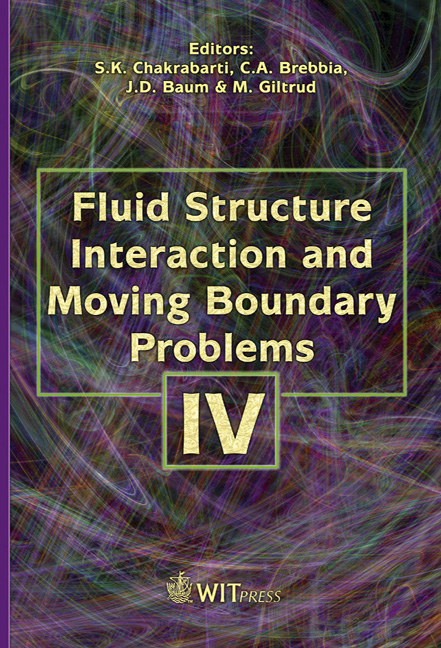Fast Multipole Boundary Element Method For The Simulation Of Acoustic-structure Interaction
Price
Free (open access)
Transaction
Volume
92
Pages
7
Published
2007
Size
446 kb
Paper DOI
10.2495/FSI070291
Copyright
WIT Press
Author(s)
L. Gaul & M. Fischer
Abstract
A fast multilevel multipole algorithm (FMM) is derived for the Helmholtz equation and adopted to the symmetric Galerkin boundary element method (BEM) for acoustics. The FMM allows to evaluate a matrix–vector product of the BEM with a computational cost of O(N log2 N), thus leading to a significant reduction of computation time and memory requirements compared to standard BEM formulations. This allows the simulation of large scale acoustic models. A coupling algorithm based on Lagrange multipliers is proposed for the simulation of structure-acoustic field interaction. Finite plate elements are coupled to a Galerkin boundary element formulation of the acoustic domain. The interface pressure is interpolated as a Lagrange multiplier, thus, allowing the coupling of non-matching grids. The resulting saddle point problem is solved by an approximate Uzawa-type scheme in which the matrix–vector products of the boundary element operators are evaluated efficiently by the fast multipole boundary element method. The algorithm is demonstrated on the example of a cavity backed elastic panel. Keywords: fast multipole Galerkin BEM, acoustic-structure interaction, mortar BEM-FEM coupling. 1 Introduction The application of the fast multipole BEM for the simulation of acoustic fieldstructure interaction problems poses new demands on the solver for the coupled systems: direct approaches are not applicable and iterative schemes suffer from illconditioning. An approximate Uzawa-type algorithm is proposed for the solution of saddle point systems arising from mortar coupling. The efficiency of the nested
Keywords
fast multipole Galerkin BEM, acoustic-structure interaction, mortar BEM-FEM coupling.





